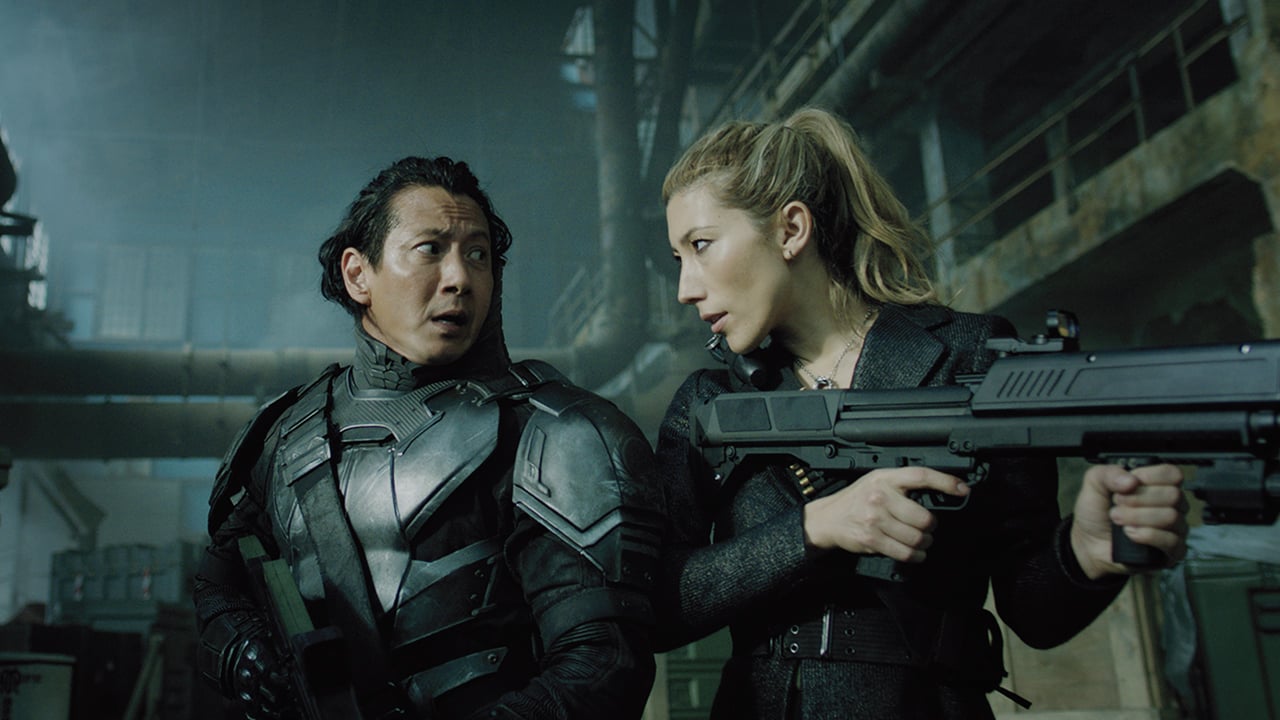“Altered Carbon,” Netflix’s new sci-fi TV show, is certainly forgettable. The series fits neatly into the cyberpunk subgenre of science fiction with its focus on lowlife and high tech. Still, it is far less impactful than the godfather of the genre — “Blade Runner.” A thinly connected plot leaves the show bland and devoid of any real character.
Joel Kinnaman plays Takeshi Kovac, an elite soldier turned freedom fighter in the future. He is resurrected in a new body 150 years after his death to solve the murder of the world’s richest and oldest man. In this future world, an individual’s consciousness is housed in a disc implanted at birth. Thus, their bodies are merely “sleeves” for them to discard when damaged. This luxury, however, is only afforded to the wealthier denizens. The poor have to live with their bodies come what may. The super rich are near immortal (Kovac’s employer is over 300 years old) and seemingly completely above the law, indulging in all their desires and fantasies. They live atop gleaming towers far above the clouds, while the poor live below in the dank and gloomy streets.
The entire world of “Altered Carbon” is extremely clichéd and unoriginal — exorbitant wealth and immortality have long been paired with unfettered depravity (One need look no further than “The Picture of Dorian Gray”), and here it is once again, splashed across our screens with as much gratuitousness as possible. The themes and motifs are old hat, and the jargon is confusing; many of the important terms aren’t fully explained or get lost in translation. For instance, human bodies are referred to as “sleeves” because the consciousness is now separate from the body. Later on, however, the show presents the nebulous idea of “double-sleeving.” While the whole plot hinges on this concept, the show fails to properly explain it. Kovac himself also seems to have superhuman abilities which are never fully explained either, including a handy tool called “envoy intuition” that apparently allows him to see through walls at certain points but then sometimes not. These little incongruous details weaken the plot overall because much of it rests on specific elements in the world.
Overall, “Altered Carbon” feels incoherent. There was little connection and flow between episodes, and the style and motifs seemed to shift with every new episode, and the characterization was more than a little flexible. The cinematography did not feel particularly consistent either. One bizarre scene features Kovac discussing the philosophy of death with a clone of himself while playing rock paper scissors, but initially only the hands are shown. This feeling of disjointedness caused the story to suffer, and as a result, there is little connection between the first episode and the last.
Furthermore, the subplots within the overarching story are distracting. The romantic arc is forced, and the almost mandatory love scene comes out of nowhere, especially as the show focuses on how the characters involved are actually in love with other people. Overall, these subplots come away feeling very forced and take too much to tie in to the main story. The origins of Kovac are boring and unimaginative. His story is one that we have seen time and time again. The surly, reserved hero, who has lost everything and has since strayed from the path of the light, through this adventure learns to love again and is restored to his righteous self (oh — and he’s actually a nice person once you actually get past the tough guy exterior.) His initial claims to be simply using his allies gives way to the customary scene in which he offers to give himself up in exchange for their safety.
The characters themselves all seem to fall into fairly simple archetypes. Kovac, the tall, dark and brooding action hero; his imperious, self-aggrandising, uber-rich employer; the corrupt cop on the take; the list goes on. There were one or two interesting characters: namely the AI who aides Kovac on his quest and the daughter of another ally who goes from being the shivering victim to some sort of uber cyber warrior; however, what little backstory they did get was completely overshadowed by the singular focus on Kovac’s origins.
The performances are similarly hackneyed. Kinnaman was, for the majority of the show, po-faced and wooden; although in his defense, the part didn’t call for much in the way of facial expressiveness. All his co-stars give decent performances. On the whole none of the parts required too much acting ability. However, James Purefoy’s turn as the pompous and odious Laurens Bancroft, the man whose murder Kinnaman is resurrected to solve, is one of the better in the show. Purefoy gives a real weight to his character at points. Similarly, Renée Elise Goldsberry breathes a bit of life into her character.
Despite these grave issues, “Altered Carbon” is not all bad. It does have another redeeming feature: its fight scenes. Much of the action from the show revolves around some fun sequences; after all Kovac is a super fighter, and watching him work is enough to make it through some of the duller parts of the series. However, even then there aren’t really enough of them to sustain the entire length of the show. The viewer instead is entertained with copious nudity while they await the next bloodbath (And on one occasion the two are even combined). Still, the show’s tendency to throw as much blood and flesh across the screen as possible becomes a little off-putting after 10 hour-long episodes.
Ultimately, this is a show that could only work on Netflix. If it were a weekly serial on regular television, it is unlikely it would retain many of its viewers from week to week. Its premise is unimaginative, its plots are predictable, its characters are archetypal, and its performances are uninspiring. Yet, if you’re looking for another show to mindlessly binge watch over the coming summer, it’ll do.
Contact Abe Thompson at athomps3 ‘at’ stanford.edu.
